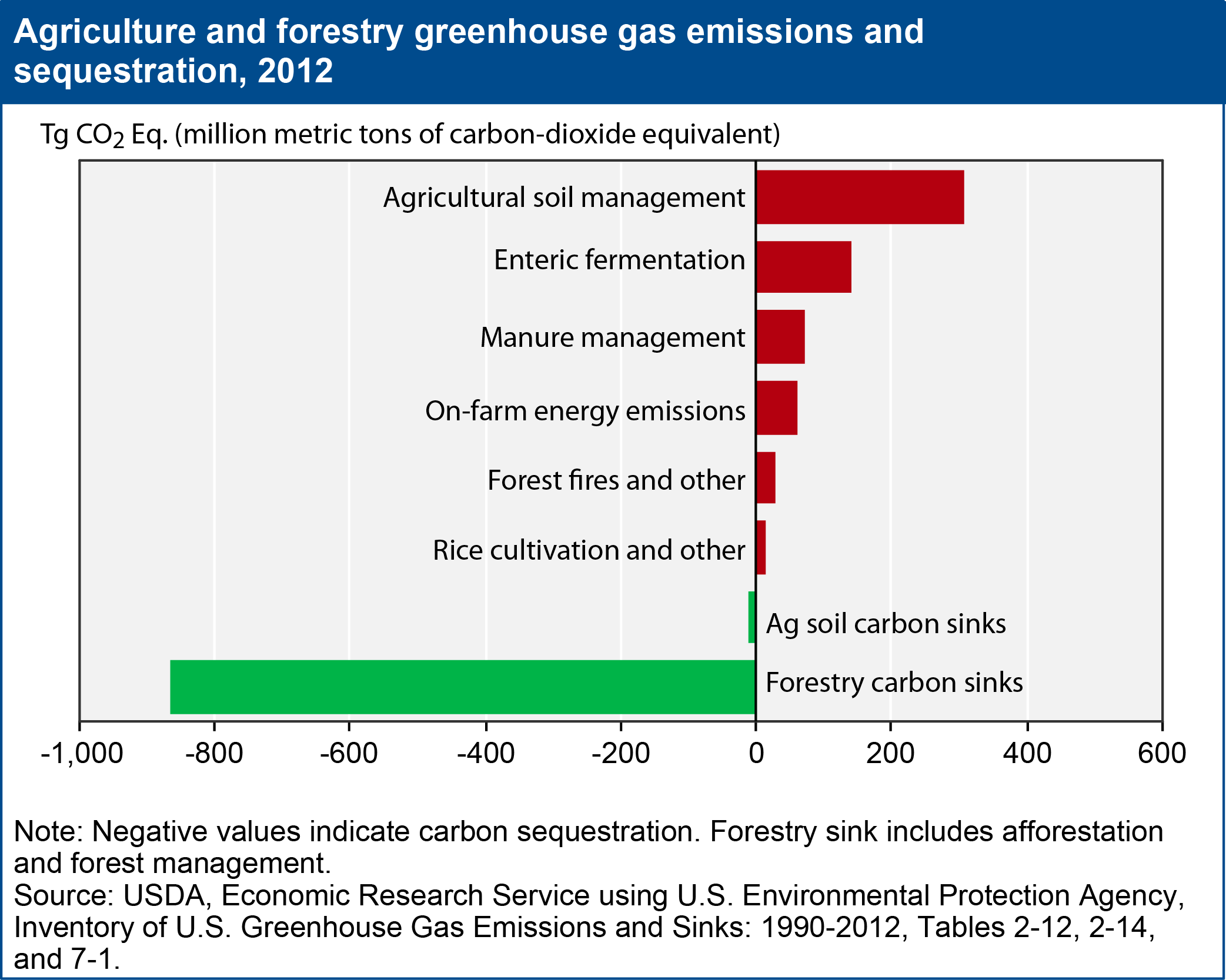Agriculture's role in climate change: greenhouse gas emissions and carbon sequestration
- by Carol Jones
- 4/22/2014

The greenhouse gas (GHG) profile of the agricultural and forestry sector differs substantially from the profile of other sectors. Agriculture is an emission-intensive sector; it accounted for less than 1 percent of U.S. production (in real gross value-added terms), but emitted 10.4 percent of U.S. GHGs in 2012. Energy-related CO2 emission sources—which dominate GHG emissions in most other production sectors—are dwarfed in agriculture by unique crop and livestock emissions of nitrous oxide and methane. Crop and pasture soil management are the activities that generate the most emissions, due largely to the use of nitrogen-based fertilizers and other nutrients. The next largest sources are enteric fermentation (digestion in ruminant livestock) and manure management. Agriculture and forestry are unique in providing opportunities for withdrawing carbon from the atmosphere through biological sequestration in soil and biomass carbon sinks. The carbon sinks, which are largely due to land use change from agricultural to forest land (afforestation) and forest management on continuing forest, offset 13.5 percent of total U.S. GHG emissions in 2012. ERS is currently involved in research on the economic incentives farm operators have, or could be provided with, to take steps to both mitigate GHG emissions and adapt to climate change. This chart is from the topic on Climate Change on the ERS website.


